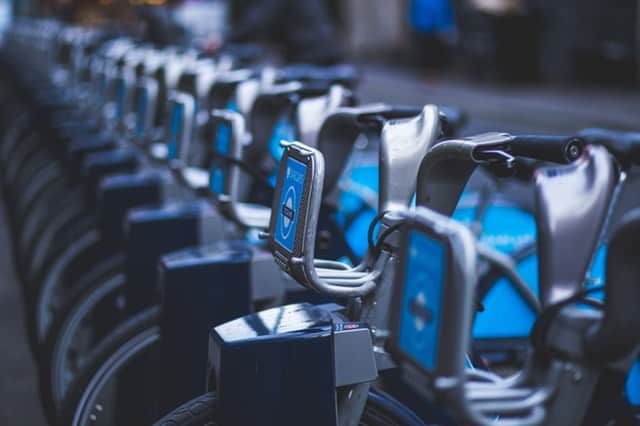Cycling around London
Over recent years, London has seen the biggest boom in cycle use since the turn of the century with an increase of over 110%. With the introduction of the iconic ‘Boris Bike’ in 2010, cycling in London has clearly attracted political as well as public interest. A comprehensive report entitled ‘cycling revolution London’ exemplifies this phenomenon labelling cycling as a “major transport mode right across the capital” (Johnson, 2010)
However, for the eco-friendly two-wheeled fanatic, there is still a long way to go with only 16% of the London population using a bike once a month (compared to 58% in Cambridge!). So what are the modern day pros and cons for these two-wheeled contraptions dating back to the early 19th century? Do they still have a place in our motor-head, ‘health-and-safety-gone-mad’ society? Let’s take a look at some of the positives and negatives of peddling London’s streets.
Pros
First and foremost, given our frantic, busy lifestyles (especially in London), when considering a means of transport, door-to-door time scales are of utmost importance. Tried and tested, cycling is clearly the quickest way to get around central London. With an average cruising speed of 13 mph (which includes stopping for traffic lights, slowing down & accelerating, and tactfully filtering passed queues of traffic jams) it trumps your standard car speed of 9 mph. Pavement shortcuts, traffic-jam slalom, running red lights all explain the rapid nature of cycle travel in London. Secondly, public transport is expensive in London and can cost an average commuter thousands of pounds a year. Cycling costs very little. You can pick up a second-hand well built, well maintained road bike for around £150, which should last a good ten years if given a little TLC. As well as being very cheap, it’s also a very healthy way to move. On average, a 30 minute bike ride in London will burn off 332 calories (the equivalent of a Tesco ham or chicken sandwich!).
Lastly, in addition to the cost factor, cycling is by far the most environmentally friendly means of transport (after walking/running of course). Following all the green revolution political discourse in recent times, this has become a valid reason for many to drop the car and hop on a bike. Some cities have even dedicated specific days of the year to commemorate ‘the bicycle’ and promote environmentally friendly practices.
Cons
So far the bike seems like the no-brainer choice for anyone looking to save time, money and the environment. However, all these advantages don’t come without risk. The most widespread deterrent for cycling in London is the danger element of putting yourself up against ‘red with rage’ London buses, tooting Hackney cabs and mammoth lorries. Referring to Tfl statistics, in 2010 there were 467 serious injuries reported on London streets, of which 10 were fatal casualties (TfL Travel Report 2011). Many collisions are caused by lorries turning left without noticing a passing cyclist.
In addition to the danger element, cycling is not the most practical means of transport. If you’re a dedicated cyclist, this means getting up in the morning and hopping on your bike regardless of the weather. For those working in office environments, its best to check if they offer shower facilities, especially if you’re biking over 30 minutes each way.
That said, don’t let these statistics put you off trying. In absolute terms, the number of cyclists who die on London streets is very low. In 2009 there were 13 fatal accidents in Greater London. Many more pedestrians (88 in 2009), car passengers (41) and motor cyclists (39) died on London’s streets.
How to ‘be safe’ and ‘reduce risk’: three essentials
- Be visible, wear as much fluorescent gear as you can without looking like a psychedelic rave guru. As well as reflectors, lights are a must.
- Be confident; take control of space which is rightfully yours. Don’t be subjected to the yellow lines. Be a participant in traffic flow rather than a spectator.
- Your bike is your lifeline, look after it!
About the Author
HFS London specialises in providing homestay and host family accommodation to international students, tourists and professionals visiting London. We have host families in north, south, east, west and central London. If you are thinking of visiting London and wish to find out more about staying with a British host family then please do not hesitate to get in touch.

